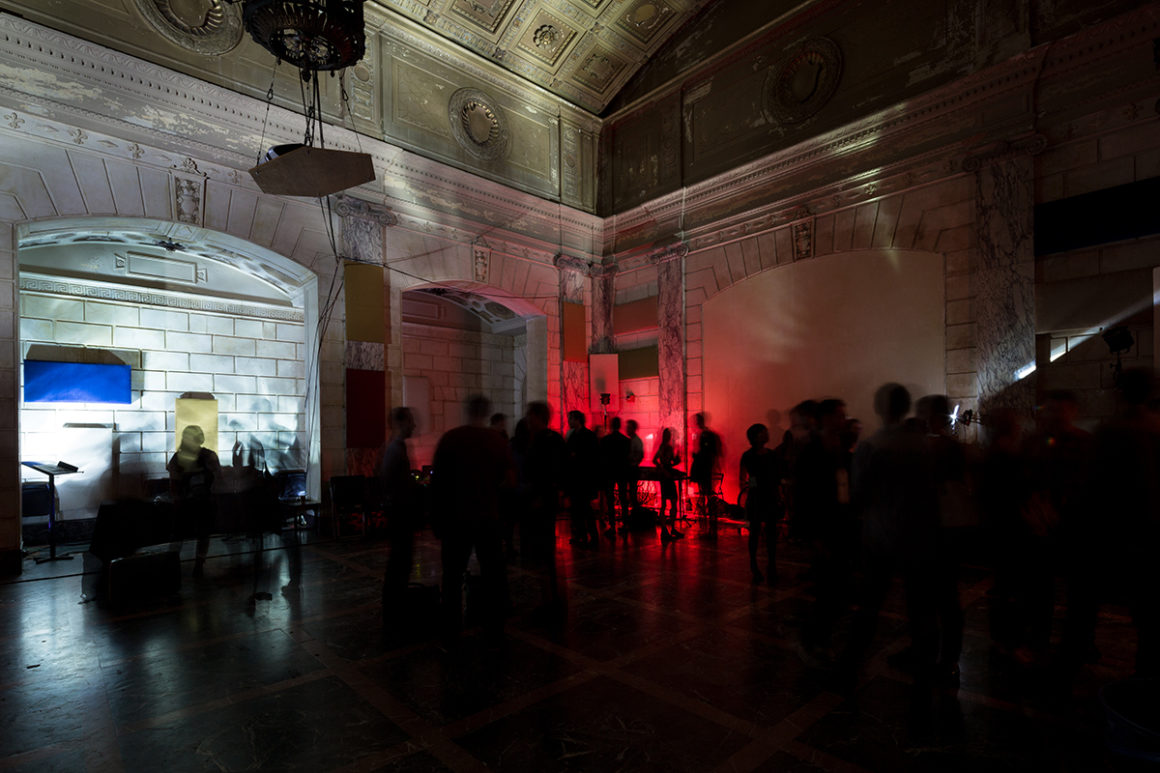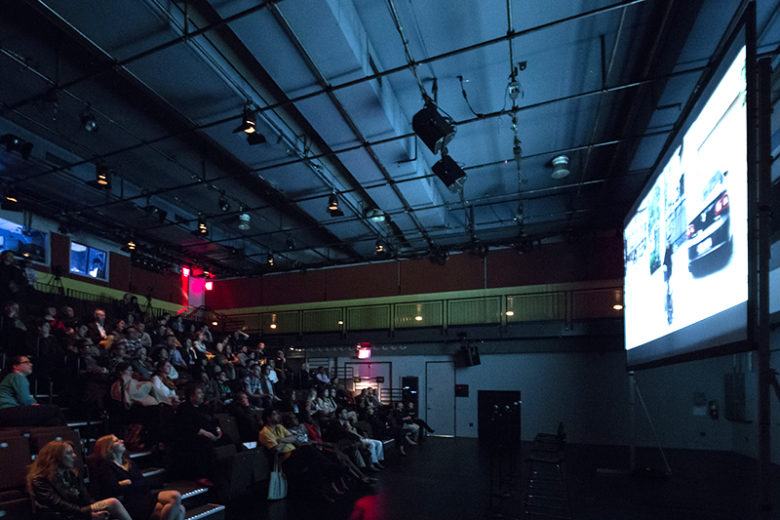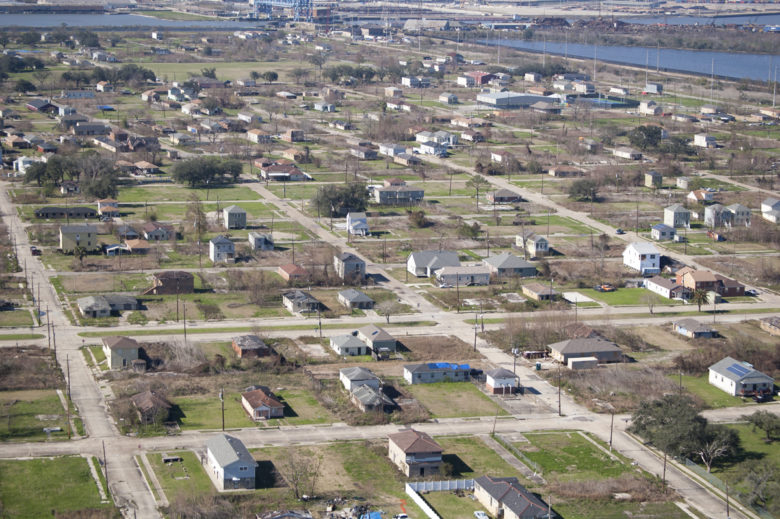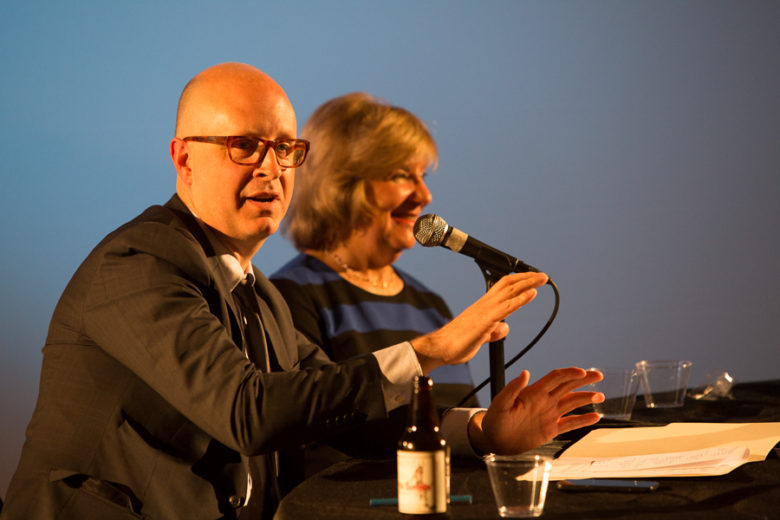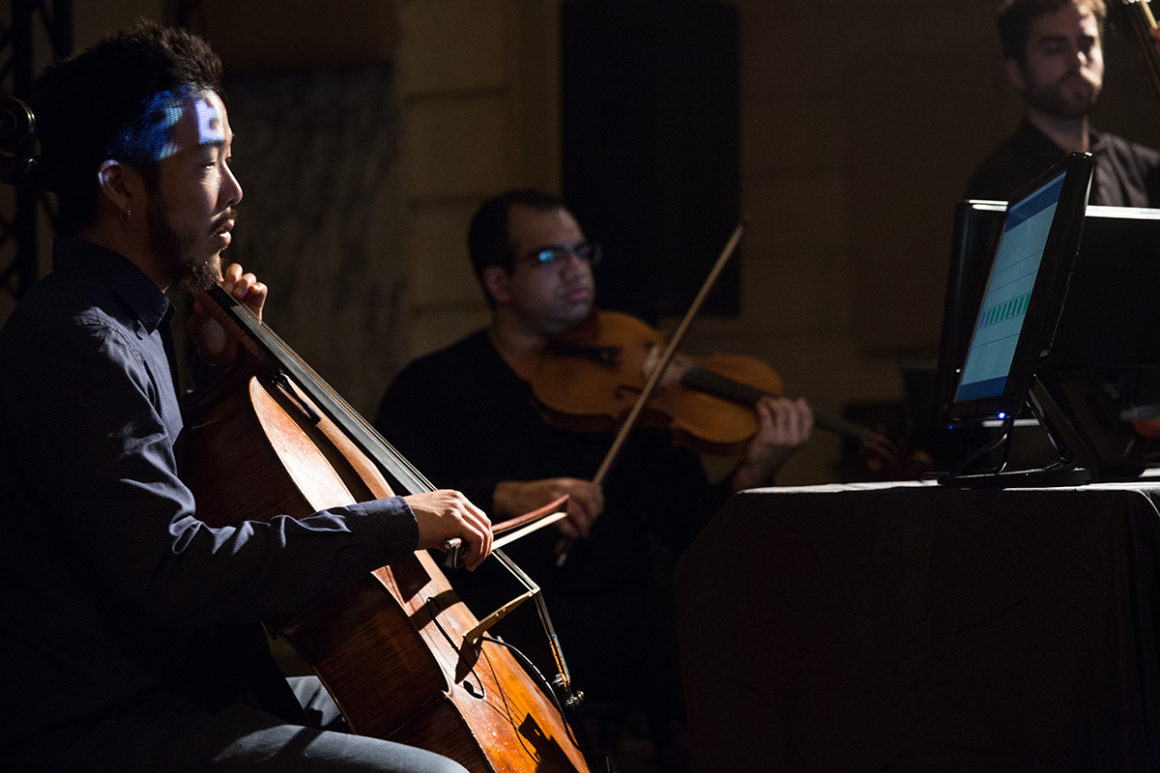
Like mockingbirds that model their song on the sound of the car alarms going off nearby, we city dwellers reflect and are shaped by our environments, often in ways we’re not aware of.
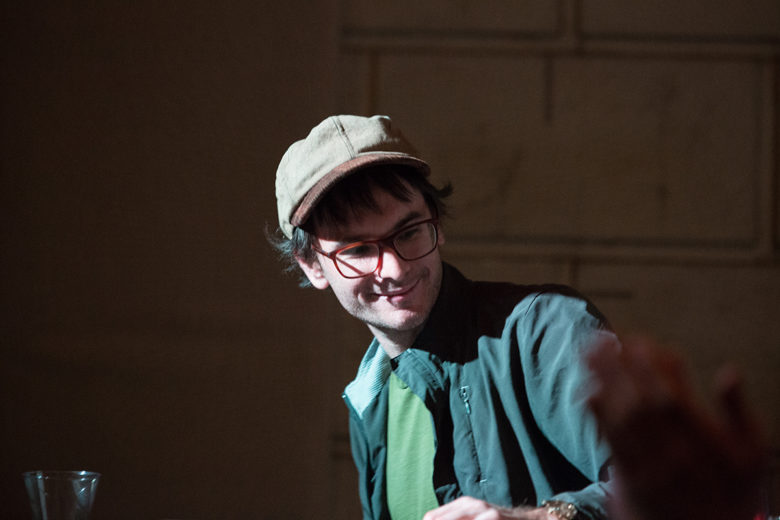
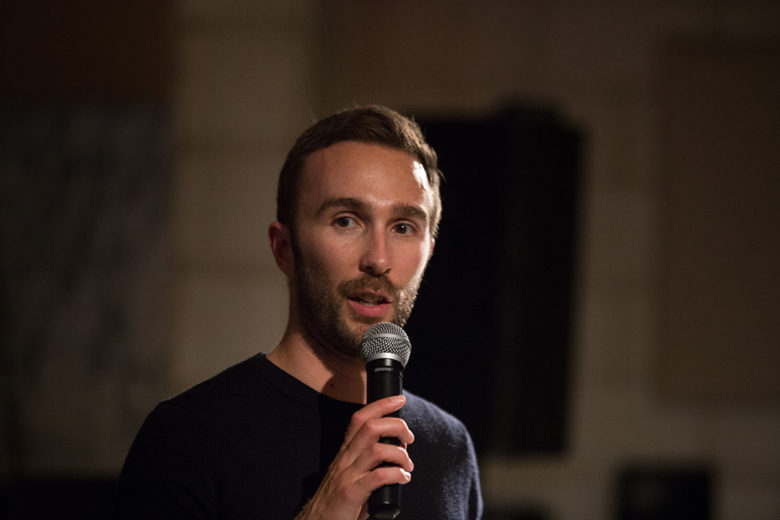
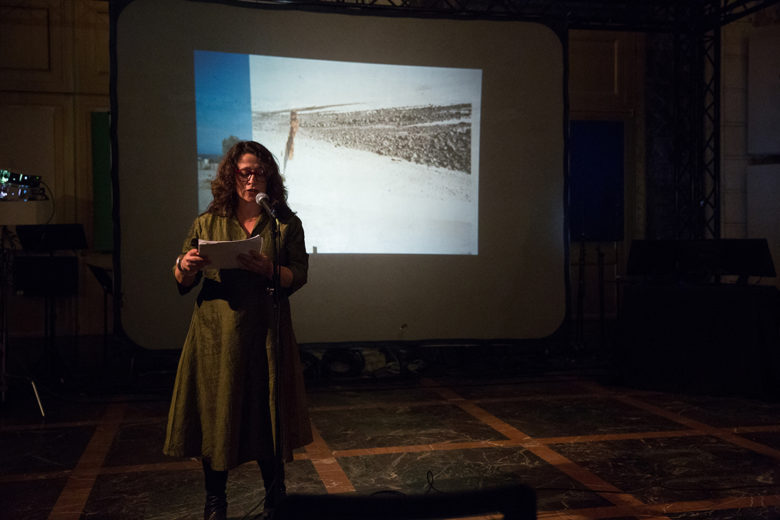
This dynamic back-and-forth between cities and their residents was the focus of The Imprint of the City, the launch of Van Alen’s Spring 2014 Events at ISSUE Project Room in Downtown Brooklyn. Artists, architects, scientists, and musicians explored facets of this relationship through five acts with musical interludes, with presentations and performances ranging from the deeply personal scale of the body to much broader and abstract investigations of how the city shapes us as we constantly shape it in turn.
The media artist Brian House’s piece Forty-eight to Sixteen is “performed data”: House used sensors to document his daily bicycle commute from Brooklyn to Manhattan in heartbeats, breaths, and wheel revolutions, and used it to create a composition for cello, viola and bass. For the audience, the low, not-quite-regular cadence of the piece took on a different dimension when Van Alen’s David van der Leer explained its genesis. While still abstract, one could imagine in the music a push to climb up the bridge, or an abrupt stop for traffic. Musical elements were woven throughout the evening with interludes from artist and composer Ben Vida and live vocal performance from C. Spencer Yeh.
The poet Rachel Levitsky also channeled an experience most of us can share when she read from the title poem of her book Neighbor, about the anonymous intimacy we gain by looking through windows at strangers whose names we may never know: “love the closeness/ mediated distance we collaborate / corroborate / I wrote distance not detachment / we never attach / to begin.” As she read, a series of photographs by the artist Ariel Goldberg were projected alongside.
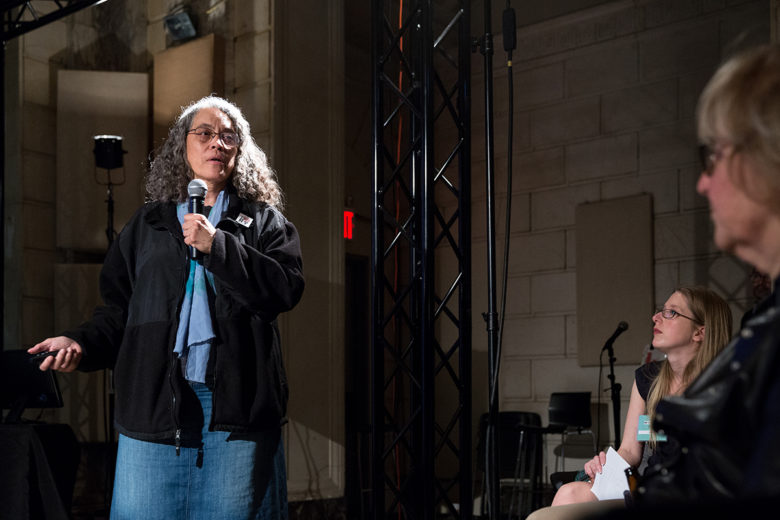
As a research psychiatrist focusing on the links between environments and mental health, Dr. Mindy Thompson Fullilove has devoted much of her career to understanding what she describes as the psychology of place. She grounded her presentation in a story about her parents, a mixed-race couple living in suburban New Jersey in the 1950s for whom Harlem represented an extraordinary sense of escape and freedom, a place where they could fit in and feel at home. In conveying this love to her, they unwittingly shaped the course of her work. She was profoundly influenced by the French architect and urban planner Michel Cantal-Dupart’s ideas about the humane design of neighborhoods, and is a founder of the CLIMB Project, which aims to restore safe and beautiful public parks to Northern Manhattan, and make then central to the life of the neighborhood.
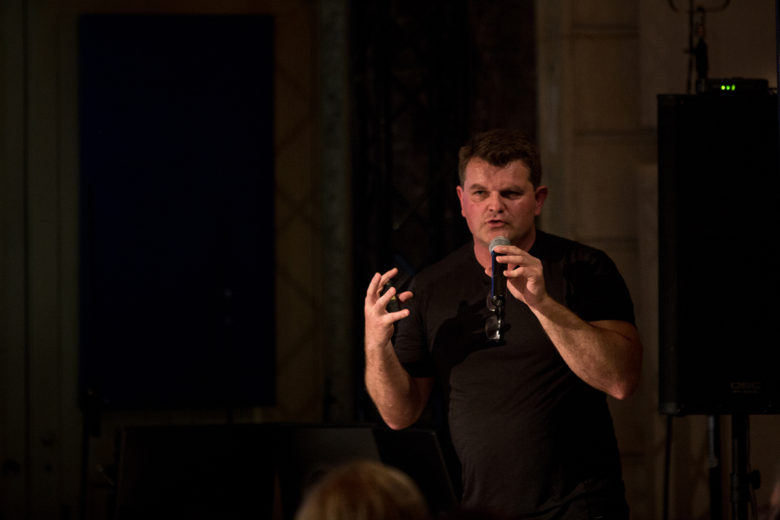
Kai-Uwe Bergmann of BIG shared his deep love for Italo Calvino’s Invisible Cities, and showed how it has shaped as the way he thinks about cities. While leading the audience along on from the VW camper van he drove 15,000 miles across the United States, to now-lost souks in Aleppo and shrines in Timbuktu, Bergmann returned again and again to Calvino’s layered parable as a guide for understanding and experiencing the world around him.
The storyteller who inspires artist and designer Damon Rich and professor of architectural history at Pratt Meredith Ten Hoor is the hip-hop artist Biz Markie, whose ode to the Albee Square Mall in Downtown Brooklyn is just as ardent a love letter as Calvino’s portrait of Venice in Invisible Cities. The two detailed a project they worked on about the recent effacement of hip-hop culture and small, locally-owned businesses in Biz Markie’s beloved Albee Square Mall, and urged the audience to look more closely at the varied forces shaping places like Downtown Brooklyn.
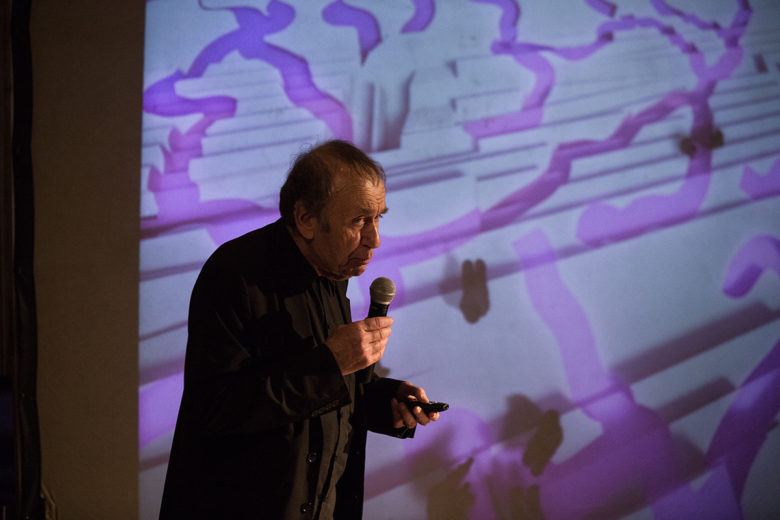
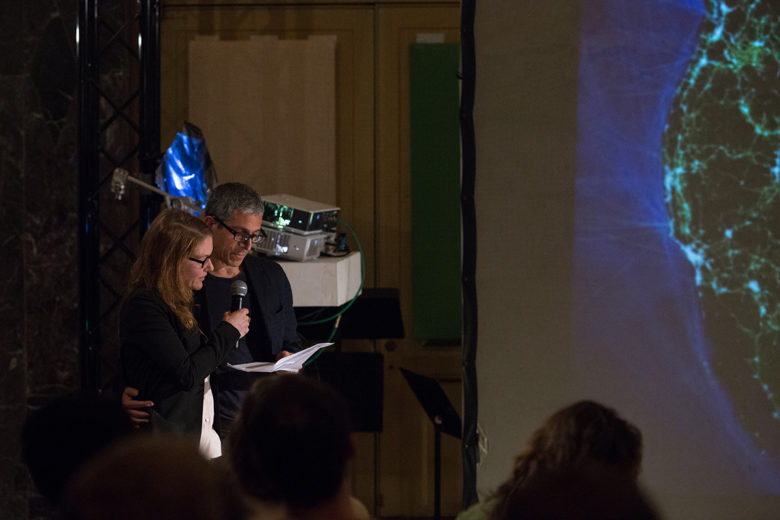
Designer Vito Acconci is also driven by a strong desire for citizens to have more agency in shaping the public realm, and his approach is admirably very direct: Design projects that people can manipulate and customize as they see fit. The work he showed was exactly that, from a float-away personal island and fuel-less personal vehicles to bridges that curl up and out of the way as needed. He was also very clear about his motivation: “Don’t call me an artist! I shifted to architecture, because I wanted things to change; I wanted people to be in the middle of architecture, not outside it.”
The architecture and performance works presented by Seth and Ariane Louie Harrison of Harrison Atelier take a different tack, asking not how to empower people but how we respond to a world in which technology underlies absolutely everything. For them, the idea of the post-human opens up a realm of inquiry into hybrids and mix-ups, and how we might reimagine the idea of wellbeing.
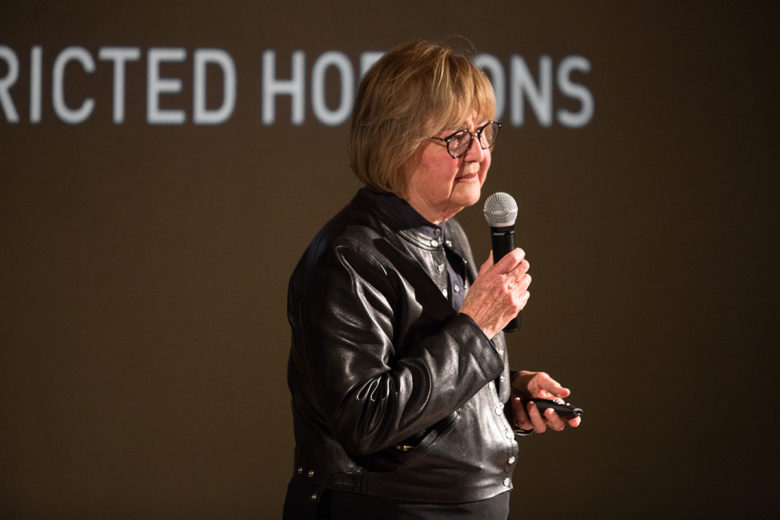
The landscape architect Diana Balmori had the final (spoken) word, and presented a meditation on the idea of the horizon in New York City, which she said, “frees our peripheral vision.” Her photographs captured that elusive line in fragments looking down avenues in Manhattan, or framed by infrastructure in the boroughs. By presenting an idea that is simultaneously rooted in the personal and geographically specific, and placing it in the larger physical framework of the city, Balmori’s project connected a number of the varied ideas that others raised over the course of the evening, and provided a compelling coda.
The imprint the city makes on us is hugely varied and subjective, as the widerange of presentations made clear. To conclude the evening, artist and designer Brock Monroe enlivened the walls of ISSUE Project Room with a light installation, accompanied by music from NYC-based composer and vocalist Nick Hallett.
